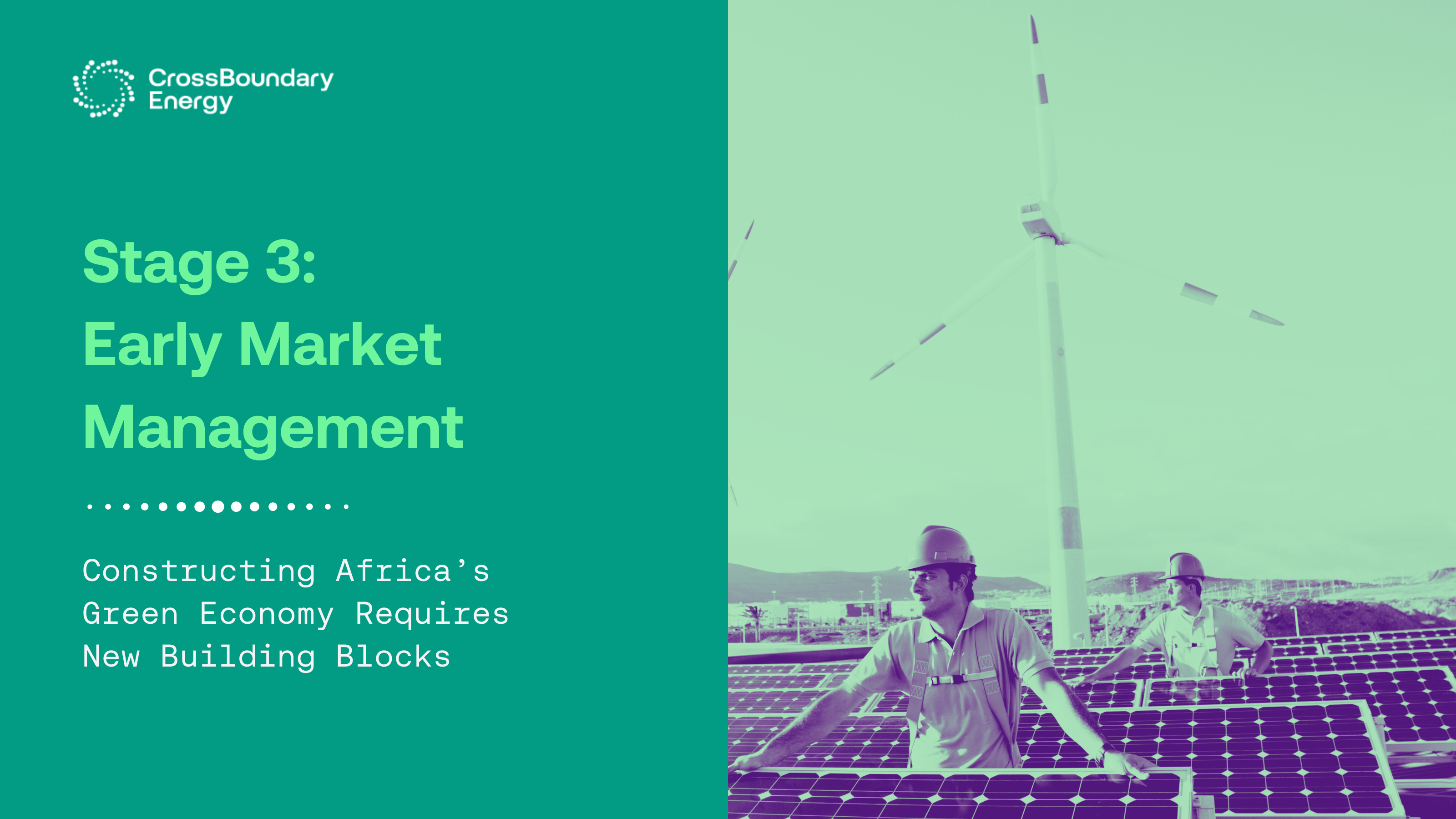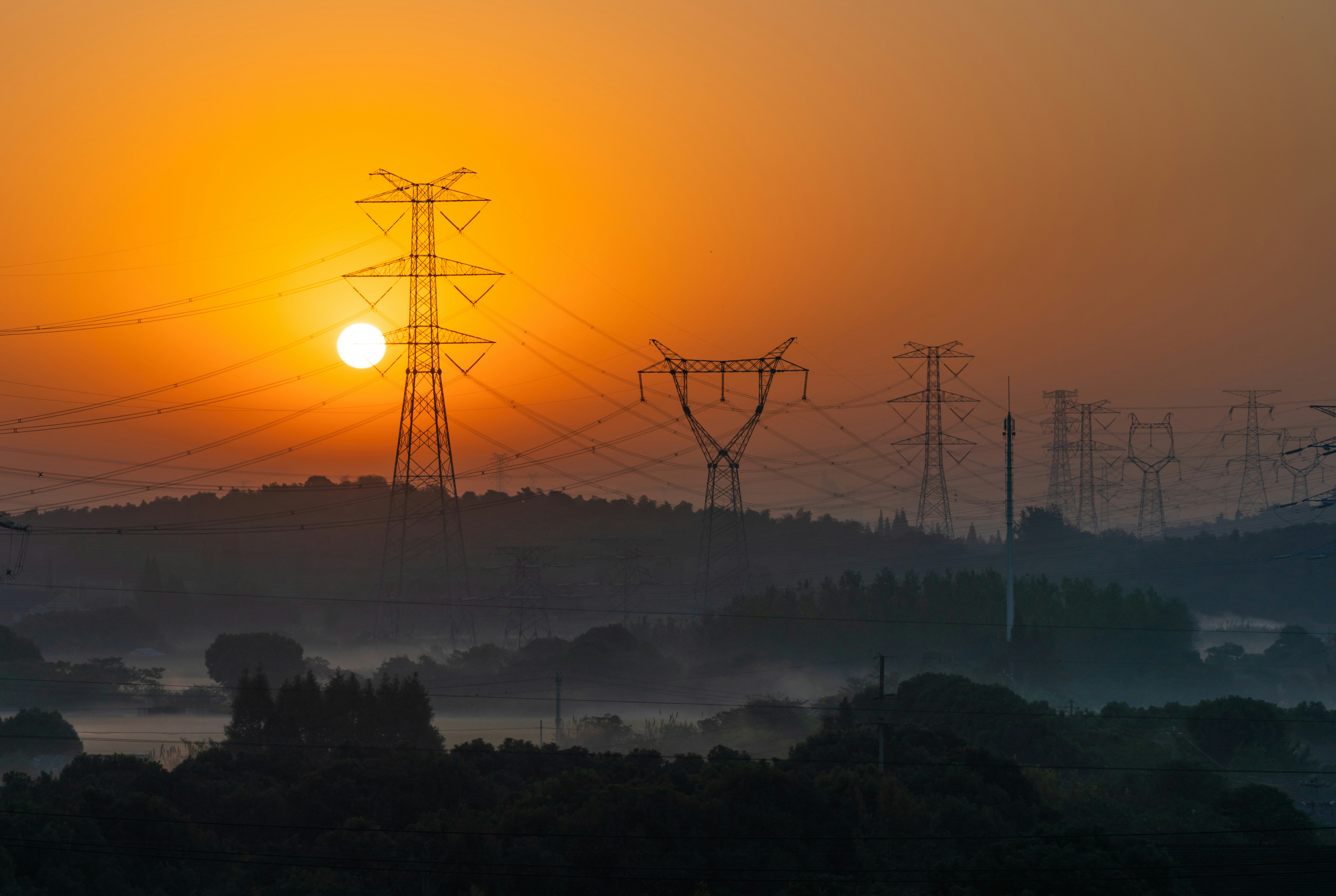
Stage 3: Early Market Management – Constructing Africa’s Green Economy Requires New Building Blocks
As outlined in our introduction of this series, Constructing Africa’s Green Economy Requires New Building Blocks, CrossBoundary Energy is sharing an Africa-centric framework for regulators and energy sector leaders to examine each other’s experiences of integrating distributed energy resources (DER) into a future-facing energy sector. We’ve organized this into stages of DER policy evolution to provide a view of the options available to energy sector leaders and utilities. We feel these stages form the basis of new strategies to integrate DERs into electricity markets.
Previously, we discussed Stage 0: Centralized Control, Stage 1: Cautious Co-existence, and Stage 2: Directed Benefits. In this final part, we explore Stage 3: Early Market Management.

Stage 3: Early Market Management
Definition of this Stage
In Stage 2 (“Directed Benefits”) the State provides data-driven price signals and incentives for DER integration. These incentive-based controls are also used to manage the risks of overloading the grid with intermittent solar and wind power. While these policy levers are supporting more effective, and therefore profitable, DER deployment, they are not expressly aimed at improving the commercial viability of DER projects. To be assured of cost recovery, and indeed profit, providers in Stage 2 still need to diligently innovate and compete for the best customers.
This changes in Stage 3 which we term “Early Market Management.” As the National Renewable Energy Laboratory (NREL) states in their paper which we’ve quoted previously, at this stage of market creation, policies are introduced that allow customers to access a market. The policies do not make attempts yet to monetize the non-economic benefits of DERs. Renewable energy penetration has increased, as has private sector participation in generation, distribution, and transmission—activities that previously were likely reserved for national utilities. For the first time, DERs are now fully-fledged participants in increasingly competitive energy markets.
No African country has yet transitioned its retail electricity market to a wholesale electricity market in which energy is bought and traded before being sold to end-users. There are, however, examples of private generators being permitted to participate in energy trading through access to regional power pools.
The case studies that follow are a window to a future transformation.
Selected case studies for this stage
New federal rules for DERs in the United States – FERC 2022
Our previous post looked at California to impart lessons on data-driven and collaborative approaches to decentralized regulatory development. In Stage 3, Market Management, it is instead federal U.S. regulations that caught our attention for its limited, but still relevant, applicability to the African context. FERC 2022 is a new federal regulation specifically focused on supporting DERs to participate in electricity markets run by the country’s regional grid operators. Order 2222 allows aggregators to bundle DERs to satisfy minimum size and performance requirements. Under the rules, tariffs must be revised by regional grid operators to establish DERs as a market participant, which allows aggregators to register them under one or more participation models. It is this DER aggregation policy lever that is also being trialed on African soil.

Capitol Hill, United States
Namibia and the SAPP
The South African Power Pool SAPP is one of several regional power pools on the continent, and it has facilitated trading energy across borders since 2009. SAPP has helped participating countries expand their access to power and improve grid stability. As our colleagues at the CrossBoundary Group article outlined in a recent article on PPA bankability, by allowing energy trading across the interconnected regional grid the SAPP has effectively moved participating markets towards wholesale energy pricing and trading. SAPP also helps to mitigate utility concerns related to intermittent renewable power given that renewable power can be exported to consumers across borders. Historically, most of the energy trading on the SAPP has been between government utilities or through the involvement of ‘trader’ intermediaries like Africa GreenCo.
Namibia is one of the Southern African markets that has pushed forward to take fuller advantage of the SAPP’s benefits. In 2019 the Government published Modified-Single Buyer (MSB) rules which formally transitioned a centralized power system to a hybrid decentralized model in which multiple actors generate and supply electricity. IPPs including DER providers can now sell energy to retail customers in Namibia. They can also, more excitingly and appropriately for a Stage 3 case study, trade energy into the SAPP.
Building on this framework in August 2023 Namibia’s Electricity Control Board (ECB), NamPower, and the Southern African Power Pool (SAPP) issued an instructive guide to encourage IPPs trade directly to the SAPP. The guide describes holistically and in detail the requirements for IPPs to become an eligible seller (ES) within the restructured Nambian market, and to thereafter export energy into other SAPP markets.
The work of Namibia’s power sector leaders helps to introduce the benefits of DERs through exploration of early market management through the regional power pool.

Swakopmund, Namibia
Recommendations for policymakers and regulators
Transitioning retail energy markets to wholesale markets is a big step. Wholesale electricity markets are best defined as a platform by which electricity is traded (bought and sold) before being delivered to end customers (including industrial customers). It relies on dispatching power in a flexible manner to meet shifts in energy demand.
While no fully-fledged wholesale electricity market yet exists on the continent, there are other Global South examples that African energy sector leaders can look to for inspiration, such as India and Chile.
The World Bank outlined a core set of principles to advance retail-based, single-buyer energy markets towards wholesale markets. They include demand-side participation, providing open access, and ensuring supply adequacy. Of note, CrossBoundary Energy’s experience suggests that these guidelines could be enhanced through greater consideration of DERs as supplemental resources.

While most African countries may not yet be positioned to undertake this extensive sector restructuring, regional power pools are providing the chance to explore the benefits—and complexities—of energy trading and market management mechanisms. Our case study on the SAPP and Namibia’s transitioning sector is one such example. Through engaging with energy trading in regional power pools like the SAPP, national utilities and regulators are gaining important insights that will help them prepare for a transition to wholesale markets. Participation in regional markets can also allow electricity customers to realize similar benefits from DERs as wholesale electricity markets, including competitive price signals and the sharing of reserve margins between countries. As is the case in Namibia, regional pools can encourage modification of the traditional single-buyer model to make way for increased integration of DERs.
DER aggregation is another policy lever which allows for more effective DER participation in wholesale electricity markets. Despite the continued prevalence of the single-buyer model in Africa, this policy building block is also being tentatively trialled on African soil. In the SAPP, energy traders are supporting smaller-scale DERs to access power pools by purchasing power from multiple IPPs and selling that power to a diversified portfolio of purchasers through supply agreements. In turn, the commercial viability of individual DER projects is enhanced. Wholesale markets may not yet exist, but the same principles of DER aggregation are being applied. Regional power markets provide an opportunity to maximize the advantages of DERs for your network, even if a full transition to a competitive wholesale market is feasible in the short term.
This is the final installment of the series, Constructing Africa’s Green Economy Requires New Building Blocks.


